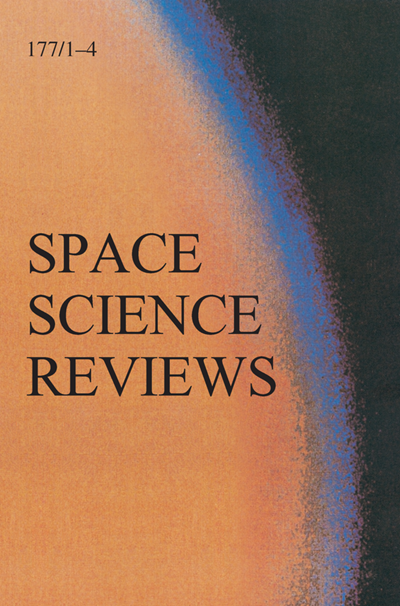太阳发电机的观测导向模型和表面场的作用
IF 7.4
2区 物理与天体物理
Q1 ASTRONOMY & ASTROPHYSICS
引用次数: 6
摘要
太阳能发电机的理论模型从简单的低维“玩具模型”到复杂的3D-MHD模拟。在这里,我们主要讨论由太阳(和恒星)观测激发和指导的方法。我们简要概述了自20世纪50年代以来太阳能发电机模型的演变,重点介绍了Babcock-Leighton方法在20世纪60年代被引入到20世纪90年代被平均场湍流发电机理论长期掩盖后的复兴之间的发展。我们总结了观测结果和简单的理论讨论,证明了表面场在发电机过程中的关键作用,并对对流区环形通量的产生和损失以及表面通量产生的极向磁场进行了定量分析。此外,我们还讨论了观测结果表明的发电机过程中可能存在的非线性,并提出了由磁活动恒星观测引起的太阳活动长期变化的模型,以及发电机过程的内在随机性。本文章由计算机程序翻译,如有差异,请以英文原文为准。
Observationally Guided Models for the Solar Dynamo and the Role of the Surface Field
Abstract Theoretical models for the solar dynamo range from simple low-dimensional “toy models” to complex 3D-MHD simulations. Here we mainly discuss appproaches that are motivated and guided by solar (and stellar) observations. We give a brief overview of the evolution of solar dynamo models since 1950s, focussing upon the development of the Babcock–Leighton approach between its introduction in the 1960s and its revival in the 1990s after being long overshadowed by mean-field turbulent dynamo theory. We summarize observations and simple theoretical deliberations that demonstrate the crucial role of the surface fields in the dynamo process and give quantitative analyses of the generation and loss of toroidal flux in the convection zone as well as of the production of poloidal field resulting from flux emergence at the surface. Furthermore, we discuss possible nonlinearities in the dynamo process suggested by observational results and present models for the long-term variability of solar activity motivated by observations of magnetically active stars and the inherent randomness of the dynamo process.
求助全文
通过发布文献求助,成功后即可免费获取论文全文。
去求助
来源期刊

Space Science Reviews
地学天文-天文与天体物理
CiteScore
19.70
自引率
3.90%
发文量
60
审稿时长
4-8 weeks
期刊介绍:
Space Science Reviews (SSRv) stands as an international journal dedicated to scientific space research, offering a contemporary synthesis across various branches of space exploration. Emphasizing scientific outcomes and instruments, SSRv spans astrophysics, physics of planetary systems, solar physics, and the physics of magnetospheres & interplanetary matter.
Beyond Topical Collections and invited Review Articles, Space Science Reviews welcomes unsolicited Review Articles and Special Communications. The latter encompass papers related to a prior topical volume/collection, report-type papers, or timely contributions addressing a robust combination of space science and technology. These papers succinctly summarize both the science and technology aspects of instruments or missions in a single publication.
 求助内容:
求助内容: 应助结果提醒方式:
应助结果提醒方式:


